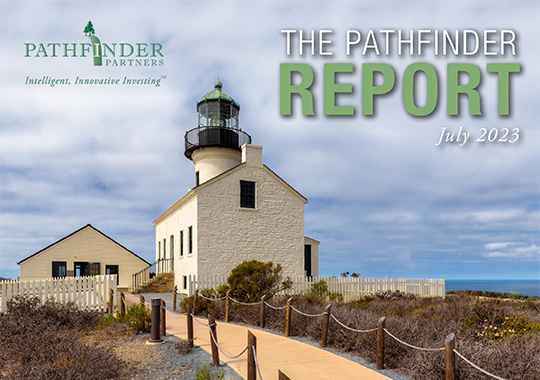Guest Feature
What’s the Plan for Downtown?
By Matt Quinn, Vice President, Managing Director

In Petula Clark’s 1968 classic “Downtown”, she sings: “When you’re alone and life is making you lonely you can always go (dramatic pause) Downtown!”.
In a post-pandemic downtown – where office vacancies have soared, public transit ridership has plummeted, crime has spiked and homelessness and drug use are often shockingly public – Petula’s lyrics are sounding dated. Across the nation’s ten major metros, offices are only 50% as full as before Covid and public transit ridership is less than 70% of pre-Covid levels. Downtown San Diego’s homeless population recently hit 2,000 – an all-time high – and cities across the U.S. are struggling to manage downtown homeless populations and the associated encampments and human waste.
The share prices for the five largest real estate investment trusts (REITs) that focus on downtown office buildings are down more than 60% since 2019 and City budgets are stressed as office building values continue to decline (office building property taxes account for about 10% of revenue in major metros). The situation is being aggravated by rising interest rates which are increasing monthly debt payments for owners with variable rate loans, while in parallel, revenue is declining due to lower occupancy. This combination has created a perfect storm for office loan defaults. Brookfield Asset Management – one of the world’s largest alternative asset management firms – recently defaulted on $2 billion in CMBS loans tied to downtown office buildings. Twitter is no longer paying rent at some of its downtown San Francisco offices while its owner, Elon Musk, signals its headquarters will be moving and that downtown San Francisco feels “post-apocalyptic”.
With a growing number of corporations relocating to lower density areas and many white-collar workers still working from home, residential neighborhoods are reaping the rewards. These quasi-urban areas with medium density apartments, restaurants, retail and bars are benefiting from the business and population migration out of downtowns into safer and still vibrant neighborhoods. In San Diego, think of North Park, Carmel Valley or La Mesa. In Phoenix, it’s Gilbert or Tempe and in Denver it’s Sloan’s Lake or Highland. The pandemic’s lingering effects on downtown offices has withdrawn the human energy from the skyscraper-laden financial districts and deposited it into smaller urban neighborhoods with safe places for people to work, relax, eat, drink, shop, exercise and connect.
In Downtown Los Angeles, foot traffic is less than 70% of pre-pandemic levels. The folks representing the missing 30%+ are still walking somewhere but they’ve likely shifted their preferences towards walking in a safer location, closer to home. In Chicago, downtown offices, which accounted for more than 80% of corporate lunch orders at Grubhub in 2019, represent only 60% in 2023. The missing diners are probably not newfound advocates of intermittent fasting but are working from home and eating at their neighborhood deli (or kitchen table). In Pathfinder’s office park, the office-worker-focused sandwich chain, Specialty’s Café, closed when the company went bankrupt during Covid and has yet to be replaced. For a while, I was forced to make my own sandwiches (they were delicious) but I’ve since discovered alternative deli options in neighboring office parks.
 Meanwhile, it seems like every mayor in the U.S. has a different plan to aggressively activate or revitalize their city’s downtown. In Seattle, Mayor Harrell recently announced a set of “immediate actions to make downtown neighborhoods safe, welcoming and active” and branded it “Downtown is You.” The list of actions is noble – activate parks, fight homelessness, bring workers back downtown – but the A.I.- generated illustrations of the future “activated” downtown look starkly different from the existing images of empty office buildings and graffiti. These new visions for downtowns often seem too perfect and don’t accept the reality that some things may have changed permanently.
Meanwhile, it seems like every mayor in the U.S. has a different plan to aggressively activate or revitalize their city’s downtown. In Seattle, Mayor Harrell recently announced a set of “immediate actions to make downtown neighborhoods safe, welcoming and active” and branded it “Downtown is You.” The list of actions is noble – activate parks, fight homelessness, bring workers back downtown – but the A.I.- generated illustrations of the future “activated” downtown look starkly different from the existing images of empty office buildings and graffiti. These new visions for downtowns often seem too perfect and don’t accept the reality that some things may have changed permanently.
Are downtowns dead forever? No, the pendulum will swing back (or may swing back), but white-collar workers are now acutely aware that they can work from home and it’s something they’ll not soon forget. If I was consulting for these mayors, my advice would be to approach the plan like a real estate investor underwrites a new acquisition: assume a reasonable and conservative future occupancy level – for downtown office, perhaps it’s 60-70% of pre-Covid levels – and craft your plan around that. You might not hit a home run but your investors – or constituents, in this case – would probably be very happy with a single or double.
Matt Quinn is Managing Director at Pathfinder Partners, focusing on asset management activities. Prior to joining Pathfinder in 2009, Matt worked with a San Diego-based firm which consulted on mergers and acquisitions and with the Wealth Management division of a California regional bank. He can be reached at mquinn@pathfinderfunds.com.
Share this Article
